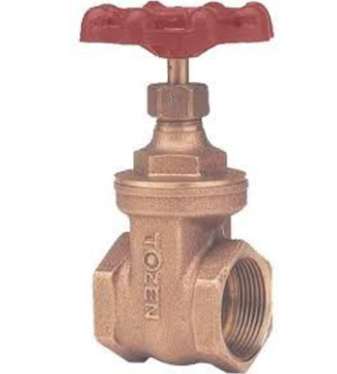
A gate valve is a type of valve that is used to control the flow of liquids and gases. It is a linear motion valve that uses a sliding gate to open and close the passageway. Gate valves are one of the most common types of valves used in industrial applications.
The main advantage of a gate valve is that it can be fully opened or closed, which allows for complete control of the flow. Gate valves are also very versatile and can be used in a variety of applications, such as controlling the flow of water in a pipeline or regulating the pressure in a gas line. If you’re looking for more information on gate valves and how they work, read on for a comprehensive guide.
What is a Gate Valve?
A gate valve is a type of valve that is used to control the flow of liquids and gases. It consists of a movable gate that opens and closes to allow or prevent the flow of fluid. Gate valves are one of the most common types of valves used in industrial applications.
How Does a Gate Valve Work?
A gate valve is a type of valve that uses a movable gate to open and close a passageway. The gate is operated by a handle or lever and is usually located at the end of the valve body. Gate valves are used in a variety of applications, including regulating the flow of water, gas, oil, and other fluids.
Gate valves are classified as either rising stem or non-rising stem valves. In a rising stem valve, the gate is attached to the stem, which protrudes from the top of the valve body when the valve is in the open position. In a non-rising stem valve, the stem remains stationary while the gate moves up and down.
Gate valves are designed so that they can be fully opened or closed with just a quarter turn of the handle or lever. When fully open, the gate clears the path through the valve so that fluid can flow freely. When fully closed, the gate blocks off the flow of fluid completely.
Gate valves are often used in pipelines where it is necessary to shut off or regulate the flow of fluid. They are also commonly used in irrigation systems and for industrial applications such as water treatment plants and chemical plants.
Different Types of Gate Valves
There are three main types of gate valves: solid wedge, flexible wedge, and split wedge.
Solid wedge gate valves have a solid wedge-shaped disk that slides up and down to open and close the valve. Flexible wedge has a disk with a flexible wedge that allows the disk to tilt as it opens and closes, which helps prevent wear on the seat.
Split wedge gates have a split disk with two wedges that open and close independently, which prevents the disk from binding in the closed position.
When to Use a Gate Valve
Gate valves are most commonly used in water and wastewater applications, as well as in pipelines carrying oil, gas, or other petroleum products. They are also used in chemicals and petrochemicals, food and beverage, and paper and pulp industries.
Gate valves are ideal for regulating the flow of liquid or gas in a pipeline. They can be used to start or stop the flow of fluid, as well as to modulate the flow rate by Adjusting the opening of the gate. Gate valves are also able to withstand high pressures and can be used in applications where tight shut-off is required.
Advantages of a gate valve
A gate valve is a simple device that controls the flow of liquids and gases. It consists of a movable gate that opens and closes an opening in a pipe or duct. Gate valves are often used in plumbing and heating applications, as well as in industrial settings.
There are several advantages to using a gate valve:
Gate valves are very versatile and can be used for a variety of applications.
Gate valves are relatively inexpensive and easy to install.
Gate valves can be opened or closed quickly, which is useful in emergency situations.
Gate valves provide good isolation between two sections of piping, which is important in many industrial applications.
Disadvantages of a gate valve
There are several disadvantages of a gate valve which include:
1. They are more expensive than other types of valves.
2. They require more maintenance and upkeep.
3. They can be difficult to operate, especially if they are not well maintained.
4. They can become jammed or frozen in place if not used properly.
Types of gate valves
There are three main types of gate valves: solid wedge, flexible wedge, and parallel slide.
Solid wedge gate valves have a solid disc that moves up and down to open and close the valve. These valves are used for high-pressure applications.
Flexible wedge gate valves have a disc with a metal or rubber seat that is held in place by a series of bolts. The disc is able to flex as it moves up and down, which makes this type of valve ideal for low-pressure applications where a tight seal is not required.
Parallel slides have two discs that slide past each other to open and close the valve. These valves are used for medium-pressure applications.
Conclusion
Gate valves are one of the most essential components of any piping system, and knowing how they work is crucial for anyone who works with them. We hope that this article has given you a better understanding of gate valves and how they operate.
If you have any further questions or would like to learn more about valves, be sure to check out our other articles or get in touch with a professional today.





